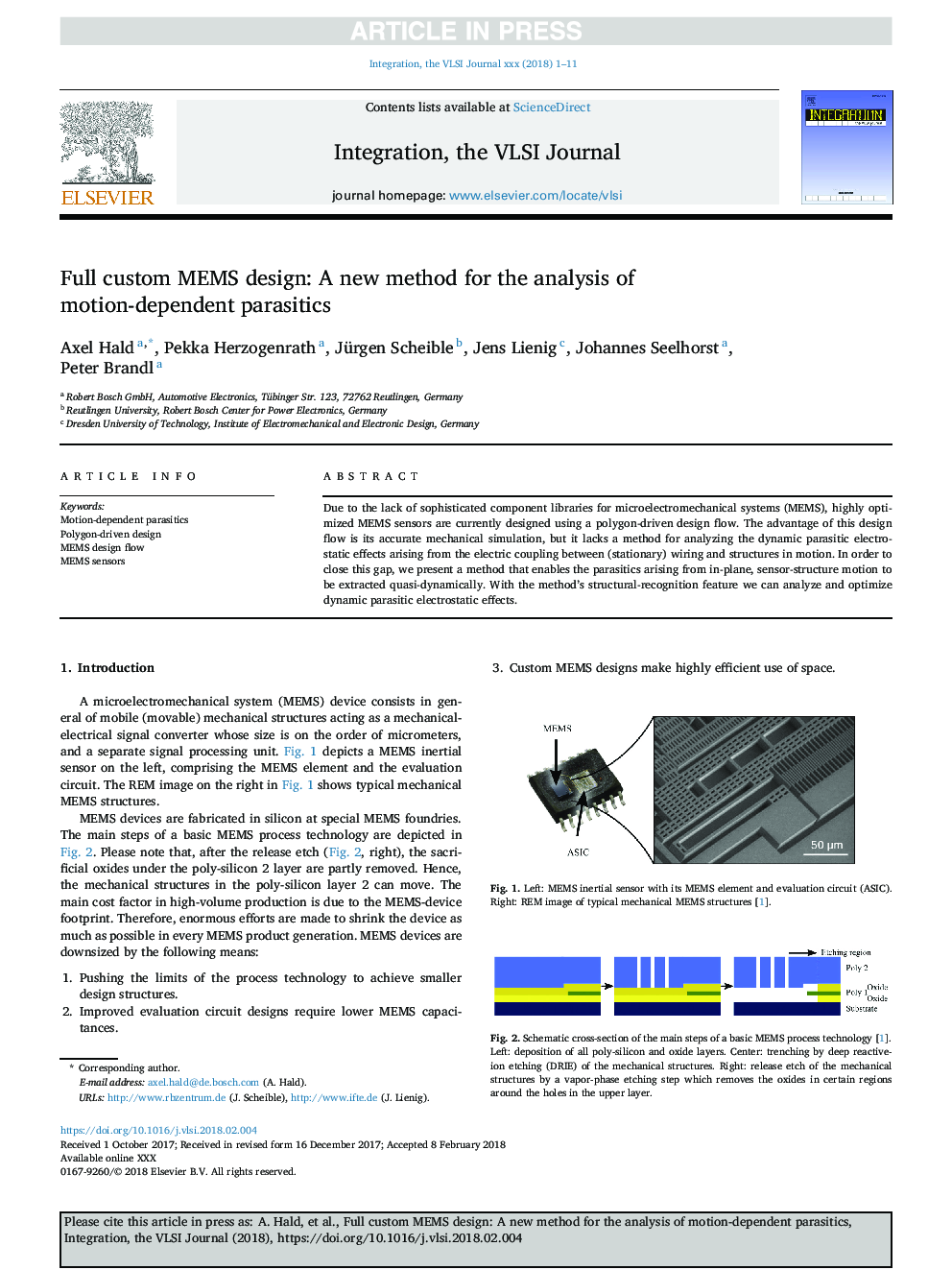| Article ID | Journal | Published Year | Pages | File Type |
|---|---|---|---|---|
| 11020972 | Integration, the VLSI Journal | 2018 | 11 Pages |
Abstract
Due to the lack of sophisticated component libraries for microelectromechanical systems (MEMS), highly optimized MEMS sensors are currently designed using a polygon-driven design flow. The advantage of this design flow is its accurate mechanical simulation, but it lacks a method for analyzing the dynamic parasitic electrostatic effects arising from the electric coupling between (stationary) wiring and structures in motion. In order to close this gap, we present a method that enables the parasitics arising from in-plane, sensor-structure motion to be extracted quasi-dynamically. With the method's structural-recognition feature we can analyze and optimize dynamic parasitic electrostatic effects.
Keywords
Related Topics
Physical Sciences and Engineering
Computer Science
Hardware and Architecture
Authors
Axel Hald, Pekka Herzogenrath, Jürgen Scheible, Jens Lienig, Johannes Seelhorst, Peter Brandl,
